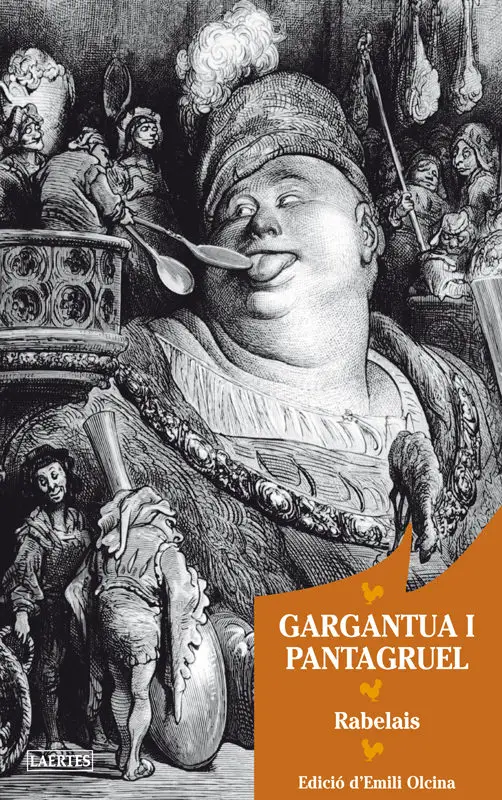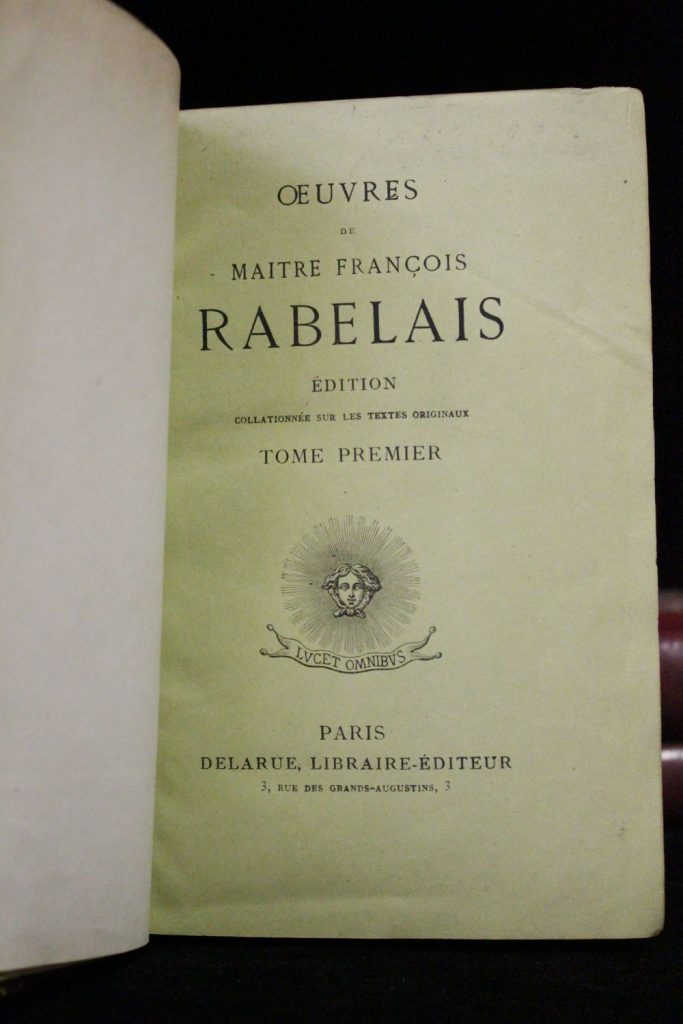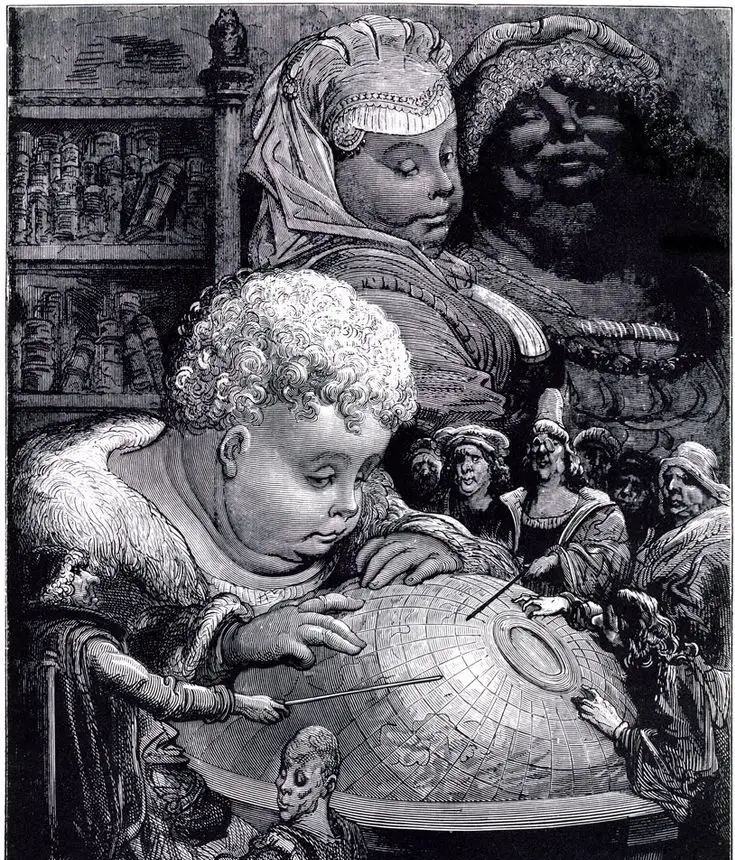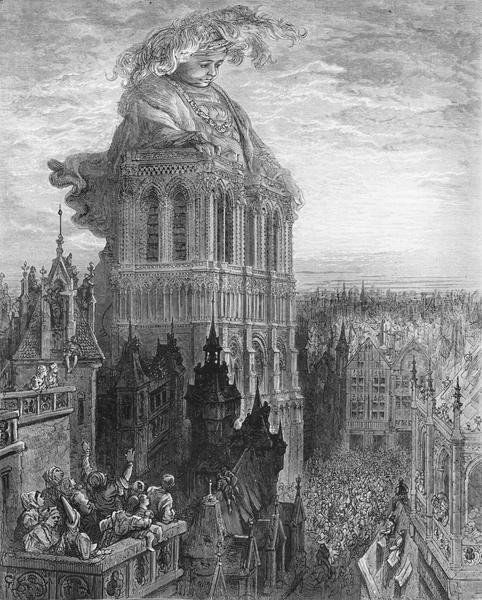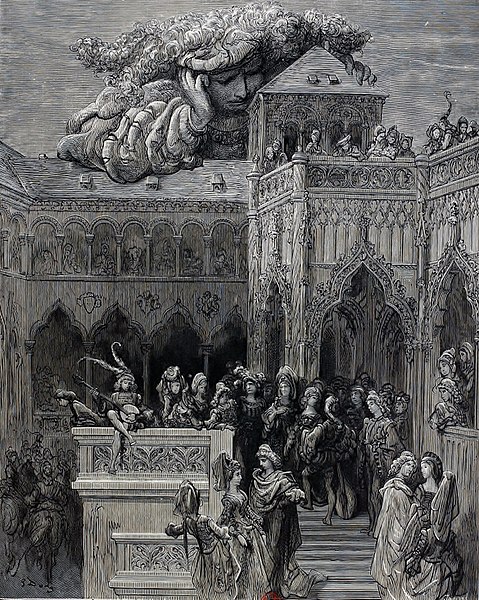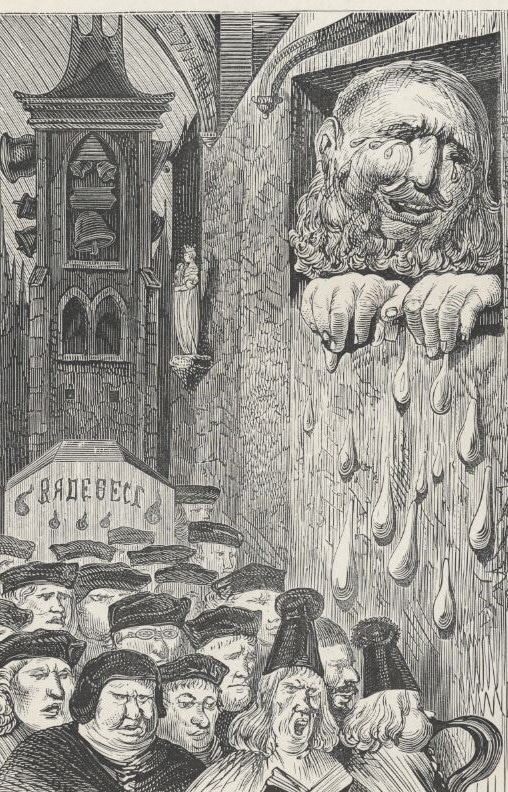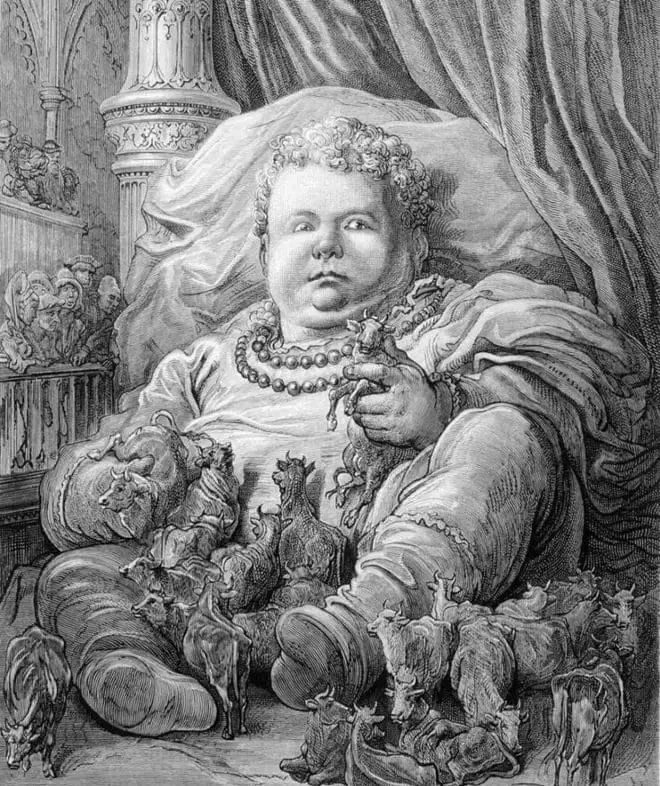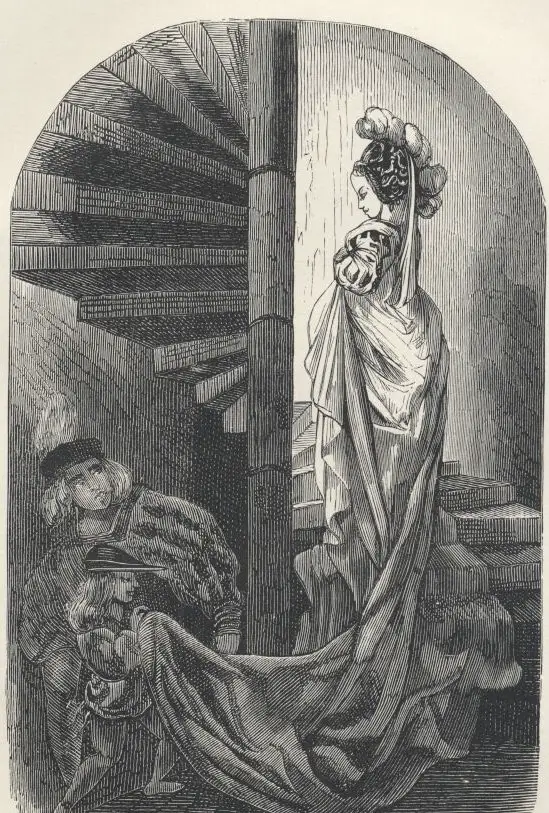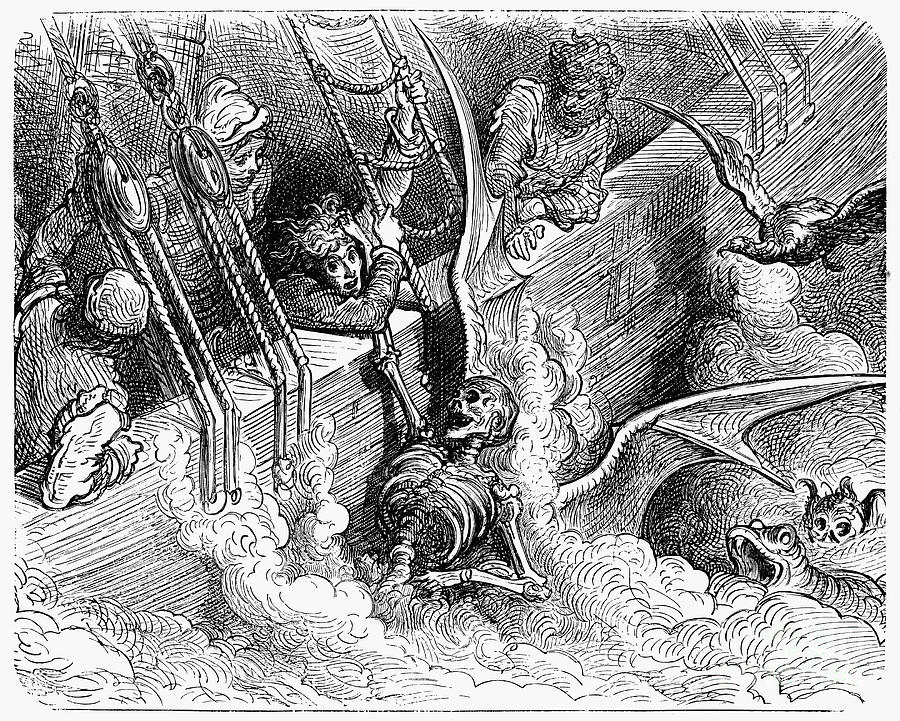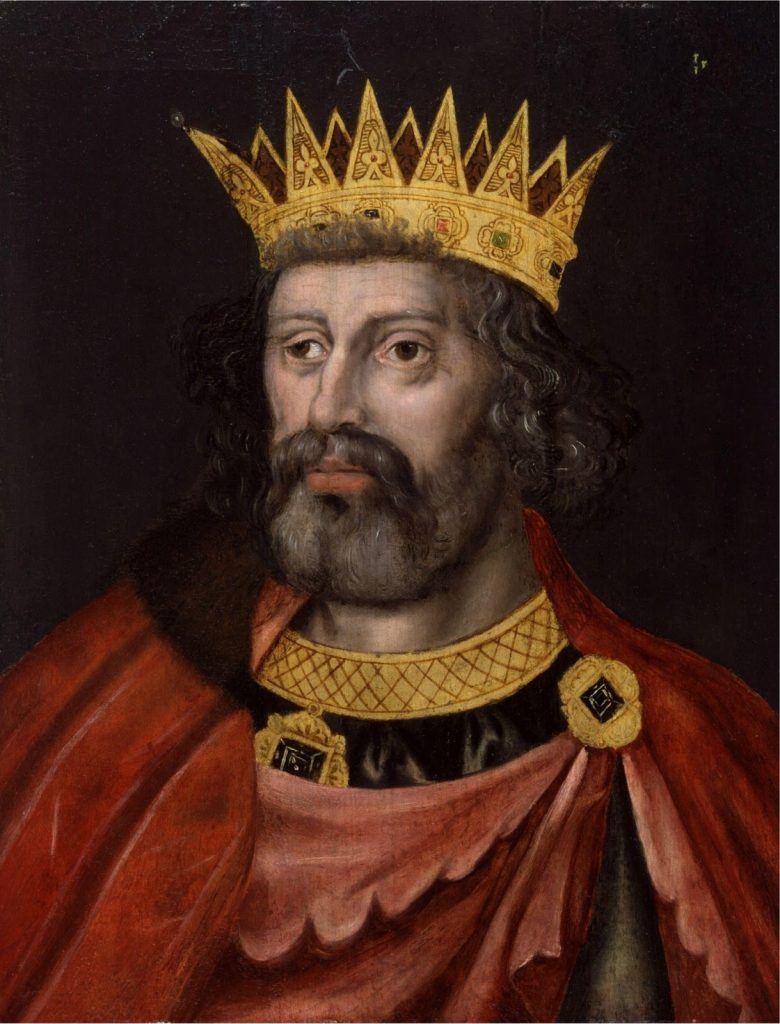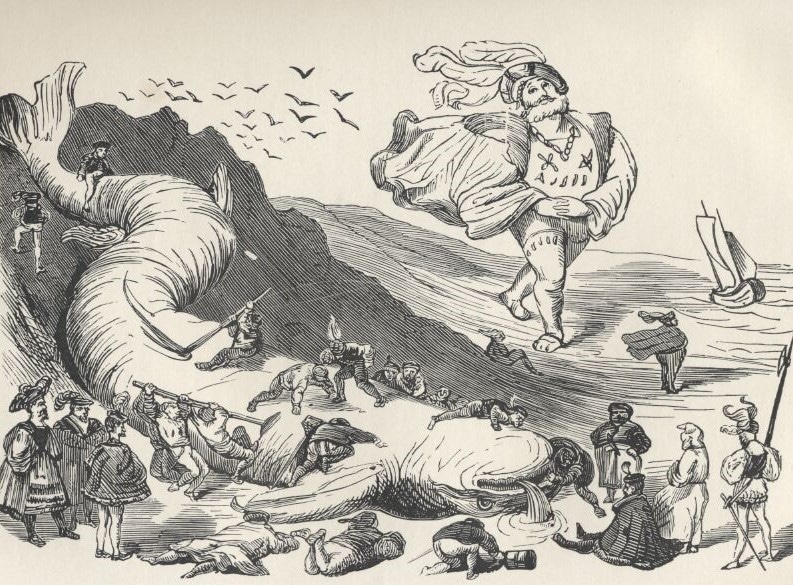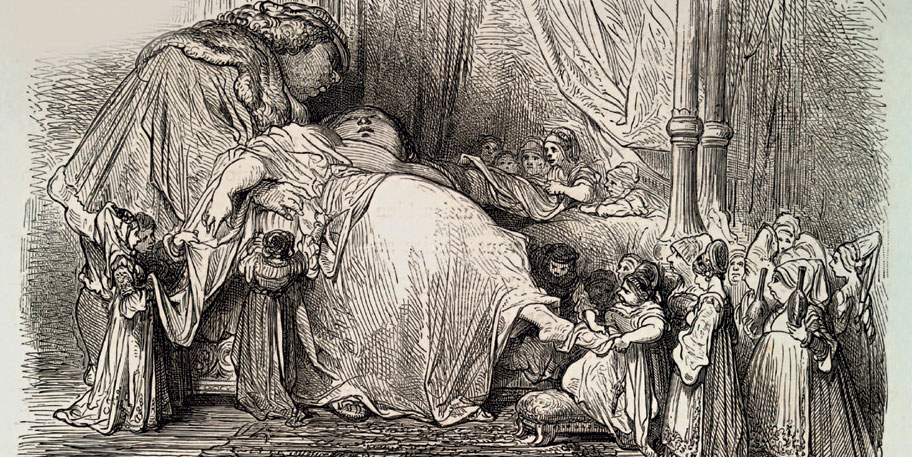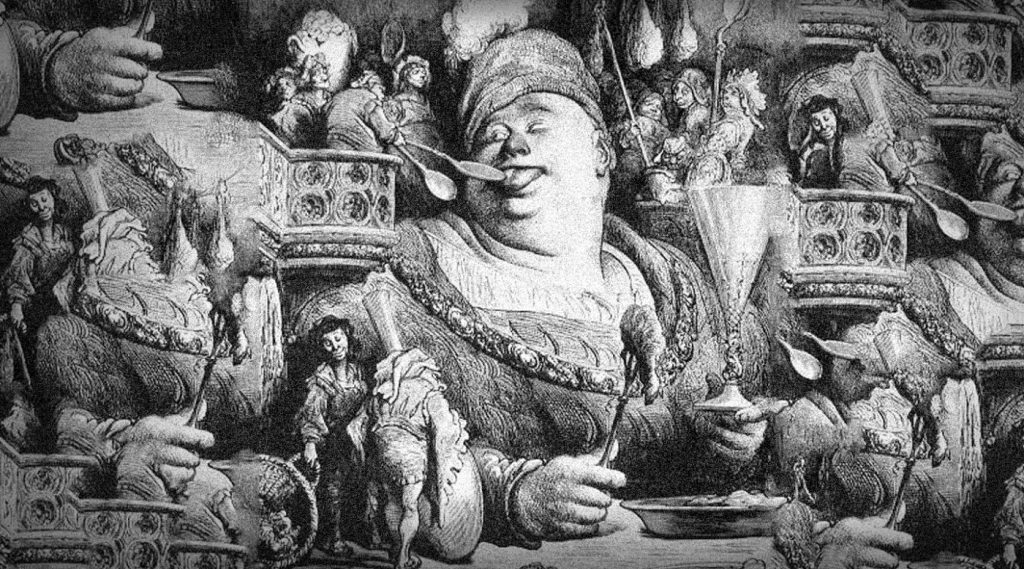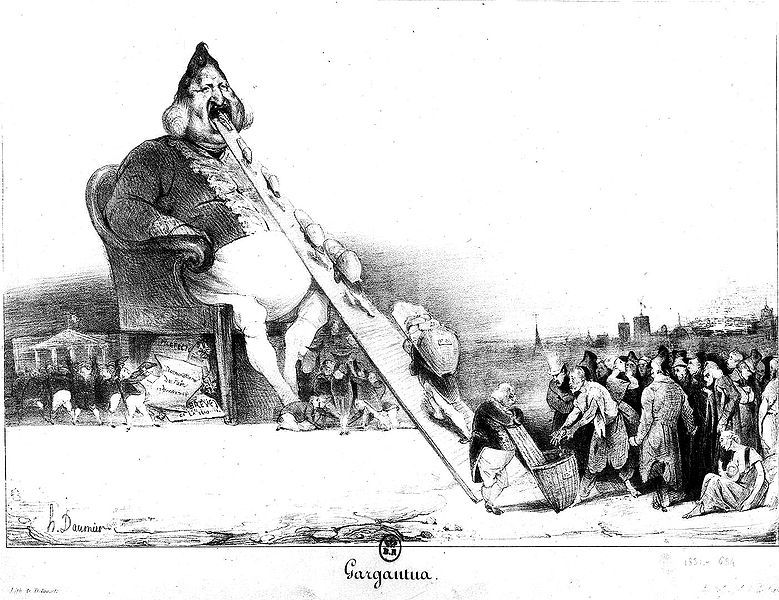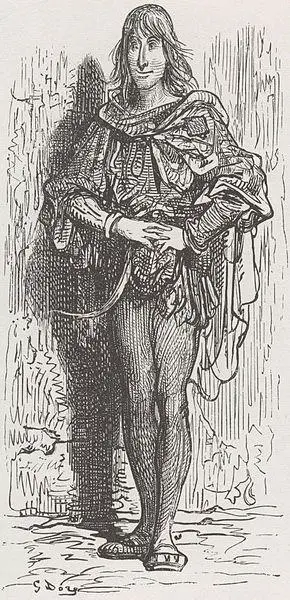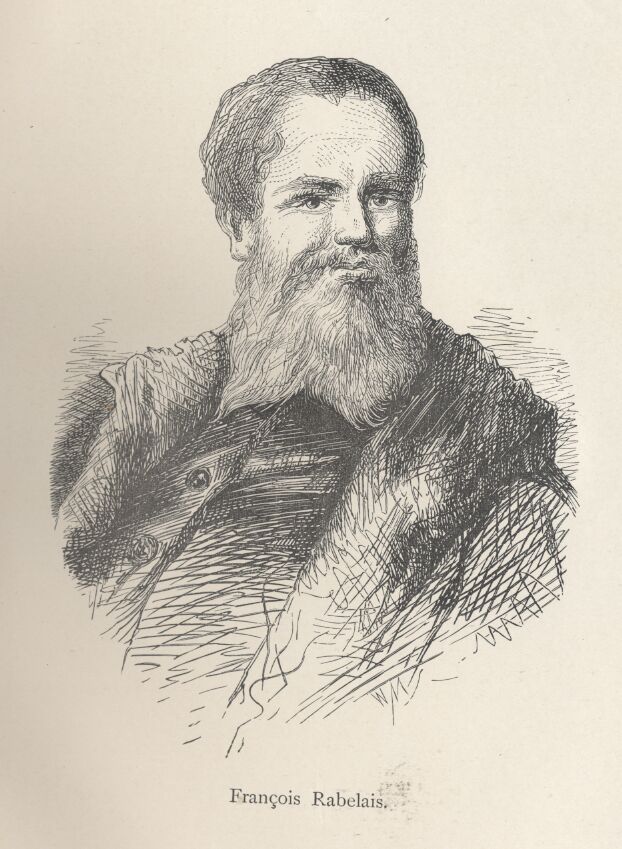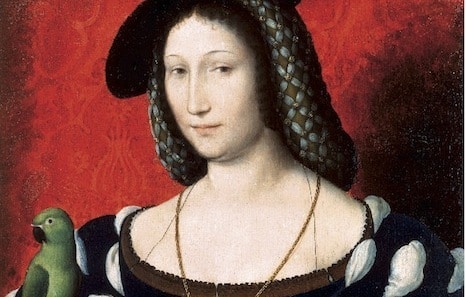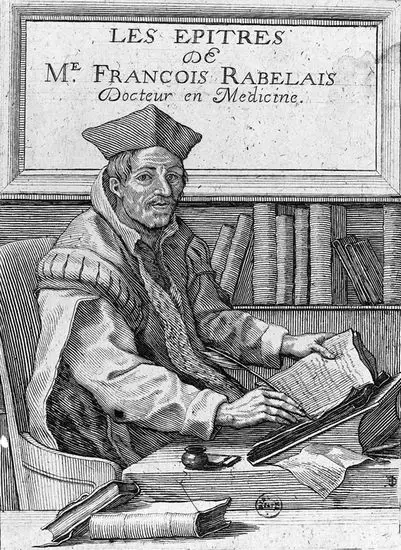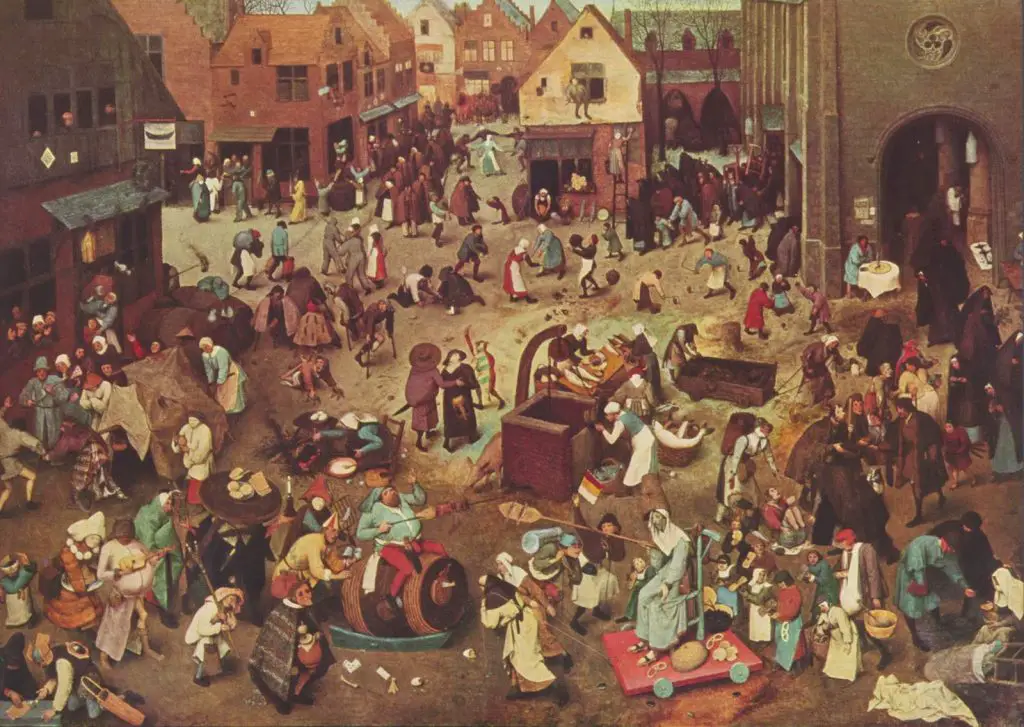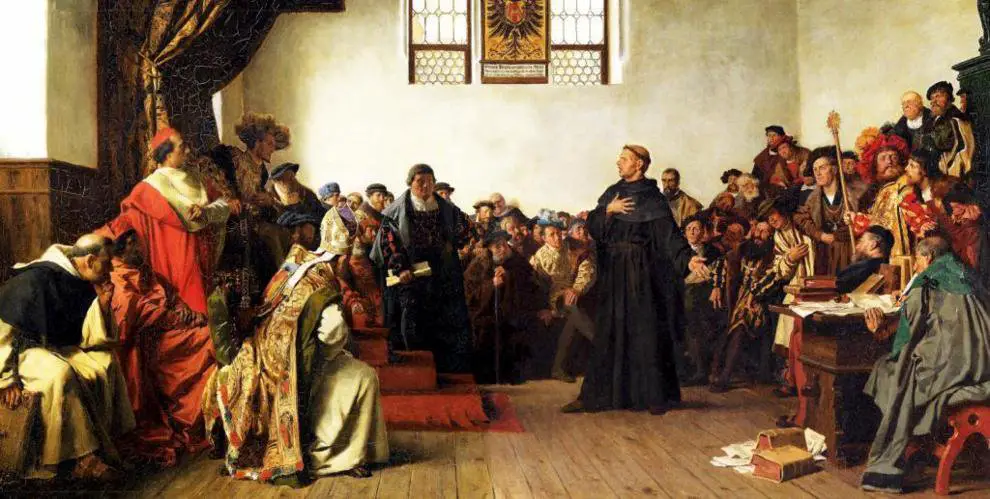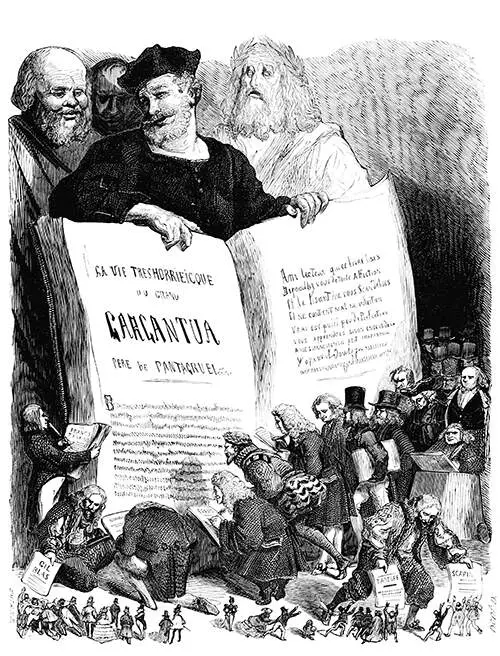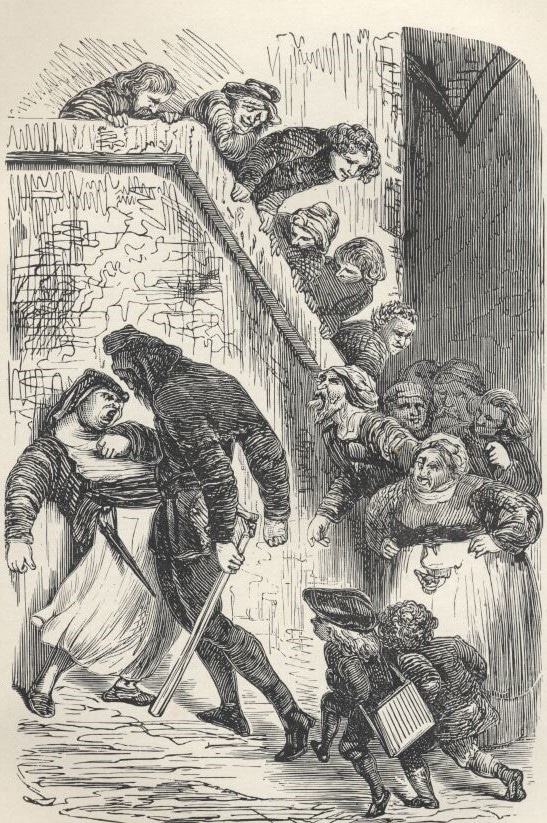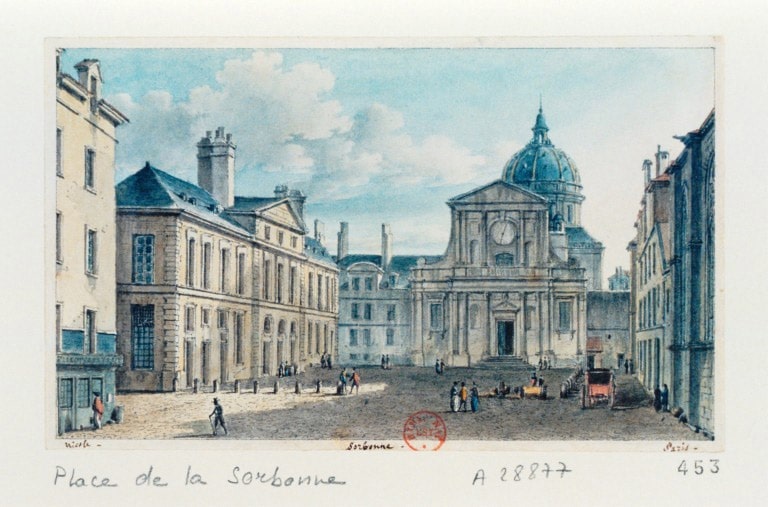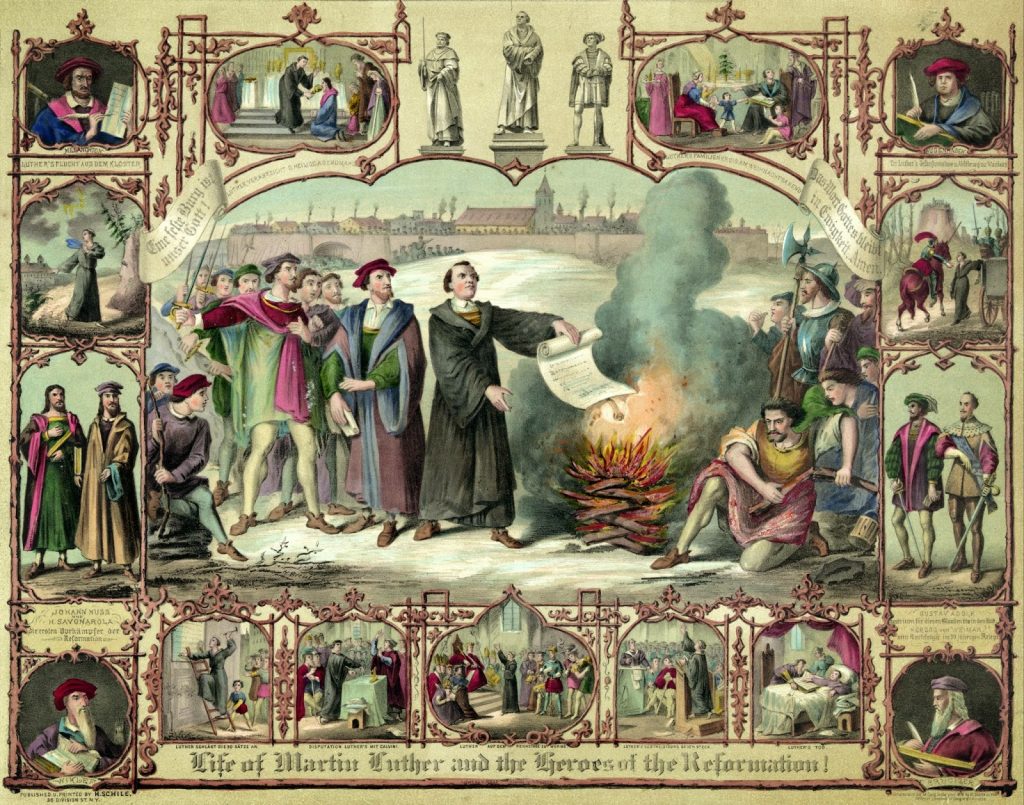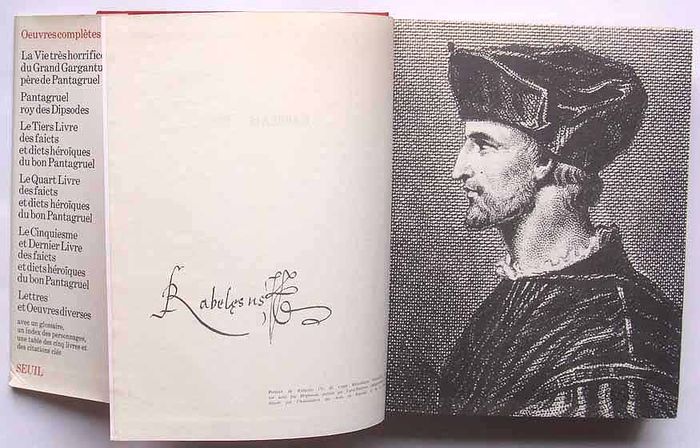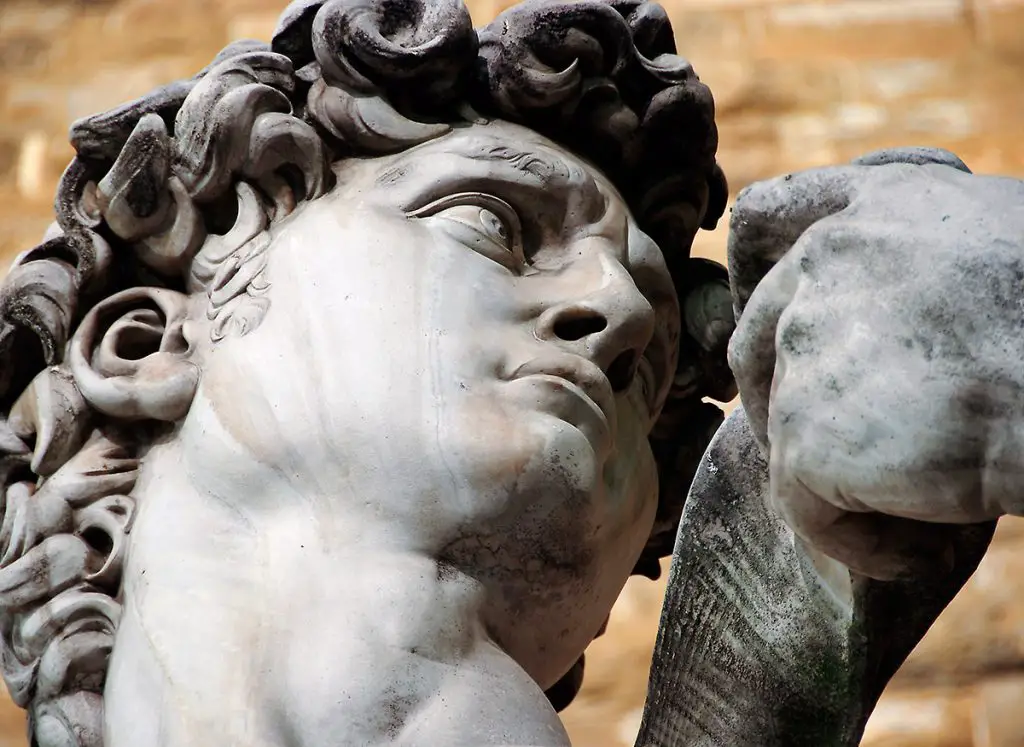Gargantua and Pantagruel is a story divided into 5 books, published between 1532 and 1564, by François Rabelais. The story tells of the adventures of two protagonists, father and son, but not everything you see is what it seems, because they are giants! Discover this humorous novel about Paris in the 16th century.
Summary of Gargantua and Pantagruel
François Rabelais is known throughout the world for his texts full of humour and humanist messages hidden between the lines. In 1534, he published his first of five books, Pantagruel, a story about the vision of Gargantua’s son. The next book tells of the birth and grotesque life of Gargantua. And the last three about culture and banqueting.
These two giants, and not in the figurative sense. Throughout the book they express themselves in vulgar and sometimes offensive language, which goes against their true nature of being kind souls to other beings. Another great story divided into a series is In Search of Lost Time.
The priceless life of Gargantua
This is the second book of the story of Gargantua and Pantagruel, published in 1534. Rabelais begins by recounting the birth of the protagonist after eleven months of pregnancy by his mother, Granguze Gargamelle. Because he was a giant, his birth was not the usual way, but through the ear! It is from here that we discover the grotesque nature of Gargantua, who, in the first seconds of his life and with his first breath, cries out: “I want a drink!
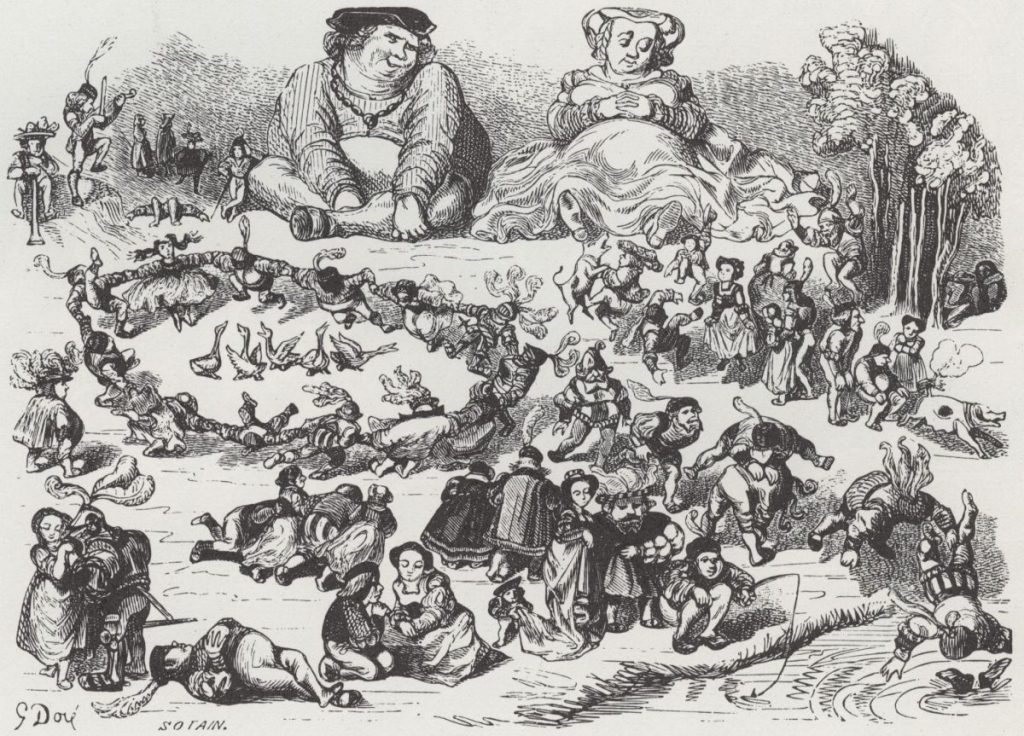
Although the child cannot be singled out for being born this way, the author recounts that his mother had eaten tripe the day before and his father had a questionable taste in drinks, citing the birth as an example. Granguze went into labour, although she claimed it was stomach pains from the food she had eaten the day before. She went to several midwives and it was one of them who gave her a remedy to relieve her symptoms, which resulted in the baby coming out through her ear.
At that moment, his father, who had been drinking and heard the story of the birth, and the locals, baptised his son Gargantua, because of the size of Granguze’s throat, to give birth there. Because of his size, he was fed with 17,913 cows, clothed in large cloths and a yearly oxcart was built for him to walk on.
Gargantua was a drinker from an early age, so much so that he needed the sound of bottles to fall asleep. Looking for a way to educate his son, Grandgousier hired several tutors, including Túbal Holofernes. Gargantua was sent to Paris to become a clergyman; in the first days of his stay, he urinated 260,418 times, drowning them. And stole the bells of Notre Dame.
Later, Gargantua was again instructed in the various fields of knowledge, this time by Panocrates, who at first did not accept him and thought him boring, but who later took a liking to him and studied at all hours when he bathed, ate and dressed. But Gargantua had to return to his father’s castle because of a quarrel between the confectioners and the farmers. The story tells of Gargantua’s attitude towards some pilgrims, who were almost eaten by the giant under the lettuce.
At the end of the battle, Gargantua had the Abbey of Théleme built, and at the entrance he had the way of life of the Thelemites and their behaviour within the walls transcribed. It is said that this book was the inspiration for Cervantes and his Don Quixote.
Pantagruel
This is the first book in the story of Gargantua and Pantagruel, published in 1532, although many consider it to be the second book because it already tells of the birth of Gargantua’s son and the continuation of the adventures.
Like its predecessor, this book begins with the birth of Pantagruel, son of Badebec and wife of his father Gargantua. During childbirth, the mother is unable to resist the colossal size of the child and dies in childbirth. Gargantua was 844 years old at the time and Africa, the home of the giants, was experiencing a dry season. Here he was given the name Pantagruel, which in Greek means thirsty. And he was described as being hairy like a bear. If you want to read another great novel, I recommend The Library of Babel.
After the birth, Gargantua did not know whether to be happy or depressed at the loss of his wife. In the end, he decided to celebrate. During his childhood, Pantagruel is described as a rather grumpy baby who, like his father, had to drink tons of milk, with one slight difference – Pantagruel almost ate a cow alive! His appetite was monumental, and he had to be chained in his cradle.
As for his education, Gargantua sent him to Orléans and later to Paris. He excelled in his studies and one day met Panurgo, a boy from Turkey. It was there that he was offered the post of President of the Court, for his great achievement in resolving the conflict between Baisecul and Humevesne, rather than the great minds of Paris. But Pantagruel refused, because it was a post that brought great corruption.
Thanks to this, a great sage called Thaumasta came to Pantagruel to challenge his knowledge with signs, but he did not count on his great friend Panurgo to refute him, and in the end he ended up with an impressed Thaumasta.
As for Panurgo, in the days that followed, he set his sights on a Parisian lady, but without success: the woman was married. In revenge, Panurgo began to ridicule her in a grotesque way. He sacrificed a bitch and used her reproductive organs to create a scent that attracted all the dogs in the stable, causing them to go into heat and chase the lady.
Pantagruel and Panurgo quickly returned to Utopia when a battle broke out, which they eventually won. As time passed, Pantagruel fell ill and was cured by little men who entered his mouth and removed all the evil there. In the end, Pantagruel is cured. If you want to read another novel with this theme, read King Lear.
Pantagruel: King of the Dipsods
This is considered to be the third and most diplomatic of Gargantua and Pantagruel, published in 1546. This novel tells the story of Panurg’s marriage and his indecision about it.
It all begins when Panurgo, a few days later, becomes Lord of Salmigondis and suddenly wants to get married. Due to the libertine nature of Pantagruel’s friend, he does not know what to do. So he begins to seek advice from various minds in the area, such as judges and prophets. The book ends with the advice to go to the Oracle of the Divine Bottle to find out about marriage.
Pantagruel: The Oracle of the Divine Flacon
The fourth book of Rabelais’s lifetime, published in 1552, describes the great adventures of Pantagruel and Panurge at sea in search of the Oracle.
When they set sail, Pantagruel and Panurge are confronted with a horizon of water, in which Panurge is frightened by the cannon fire of the battles between Henry II and Charles V. A few days later, they discover various islands, such as Makreonov.
It should be noted that this was the last book that Rabelais wrote and the most satirical of all, in which he mocks the Catholic Church, monarchs and powerful figures of the time. Rabelais wanted to publish his last thoughts because he knew that it would be the last book he would write during his lifetime.
At the time of its publication, and because of its highly critical content, which went against the ideals of the Crown, it was censored by Henry II on 1 March 1552 and ordered to be changed. He was forced to stay out of the public eye for two years because of the execution of his friend Etienne Dolet. The Hammer of the Witches is another book that speaks of the ideals of the Church.
Pantagruel: The Last Journey
Rabelais’s fifth and final book, published posthumously in 1564. The arrival of Pantagruel and his crew in the land of the lanterns.
During their voyage, the travellers pass through four islands before reaching their destination. The island where Pantagruel almost died and Mateotehniya, where they found the Queen of Quintessence, are the most prominent and are called the Lies Islands.
After overcoming these obstacles, they arrive in the land of Lantern, the one who points the way to the oracle in the bottle. But not everything is so simple. Pantagruel and his companions are invited to a dinner party by Queen Lantern. They are asked to choose a lantern of their choice. And it is here that Pantagruel asks for one to guide him on his difficult journey.
As they walk, they pass vineyards and temples decorated with paintings of women and battles. There they meet the priestess Babuc of the Divine Fountain with her entourage, who uses a magic powder to make the fountain bubble by inserting a book and drawing out the drink.
At this point, the priestess tells them to drink, singing to them that her motive was to discover that in life one must drink of knowledge. When this is done, the young people return home, where Pantagruel finally marries. Pantagruel discovers the Philosopher’s Stone, tames the Isle of Pearls and marries Prester John.
Plot of Gargantua and Pantagruel
The novel consists of 5 books, the last four of which tell the adventures of Pantagruel.
Now, Gargantua and Pantagruel is a book that focuses on the birth of Gargantua and Pantagruel, and tells of the adventures of the latter. It all begins with Rabelais’s first book, which shows a Pantagruel hungry for food and thirsty for knowledge; his ability to defend himself in court and his unbridled humour at such a young age are striking.
In the next story, Rabelais, having seen the success of his first book, begins to write the world according to the world as it was written. He begins to write the world according to the vision of the giant Gargantua, Pantagruel’s father, in which the idea of living according to one’s will stands out.
The third book develops with Panurge’s indecision about marriage, where he seeks advice from Pantagruel and the wise men around him. It is here that the divine bottle is revealed.
Here Rabelais shows the two friends setting out to sea in search of the promised solution. During their voyages, they discover new islands, characters and societies different from those they knew. It is here that the author develops a more critical and humorous reading.
The final book focuses on the discovery of the priestess and the divine bottle, with Pantagruel and Panurgo returning home, where they both end up marrying ladies.
Characters in Gargantua and Pantagruel
- Grandgousier: He is the father of Gargantua, and his appearance in the book is shown from Gargantua’s birth. An alcoholic who would rather drink than see his son born.
- Gargantua: Son of Grandgousier and Gargamelle, and a giant because he was born with an ear. In the book, he is portrayed as a young man, initially uninterested in his studies, but changing his ways as he matures. A drinker from an early age, like his father.
- Gargamelle: Pantagruel’s mother, who dies in childbirth.
- Pantagruel: Son of Gargantua and the one who killed his mother for giving birth. Like his father, he is a giant, a drunkard and a voracious eater. It is this character that stands out in Rabelais’s four books; and as the book progresses, we see an intelligent Pantagruel, with great knowledge of philosophy, geography, art and politics. His humour and manner are vulgar and insulting.
- Panurgo: Pantagruel’s best friend and travelling companion. This character is portrayed as a lascivious, vengeful and womanising young man who, after seeking knowledge about his marriage, ends up cheating on his wife.
The development of Gargantua and Pantagruel
Rabelais was known to be a man with a great sense of humour, see the clear example when Rabelais needed to travel to Paris but found himself penniless and had to set about selling sugar which contained a type of poison that would kill King Henry I. He was taken into custody in Paris but later taken to a village in the middle of the night. He was imprisoned in Paris, but later released by order of the King, who, on learning the reason, released him without consequence.
https://www.youtube.com/watch?v=IVAdwEc-H0w
Rabelais also qualified as a doctor, a specialist in several languages including Latin and Greek, a botanist, a philosopher and a poet.
During one of his many travels between 1520 and 1530, Rabelais began to develop a vision of the world outside the monastery, where he met his friend Jean Thenau and told him the story of the giants and the satire presented in Sebastian Brand’s novel. It was here that the ideas of Gargantua and Pantagruel began to develop.
His books were published in Lyon, the first in 1532 under the pseudonym of Alcofrybas Nasier. It was here that Rabelais began to develop his knowledge in a number of areas.
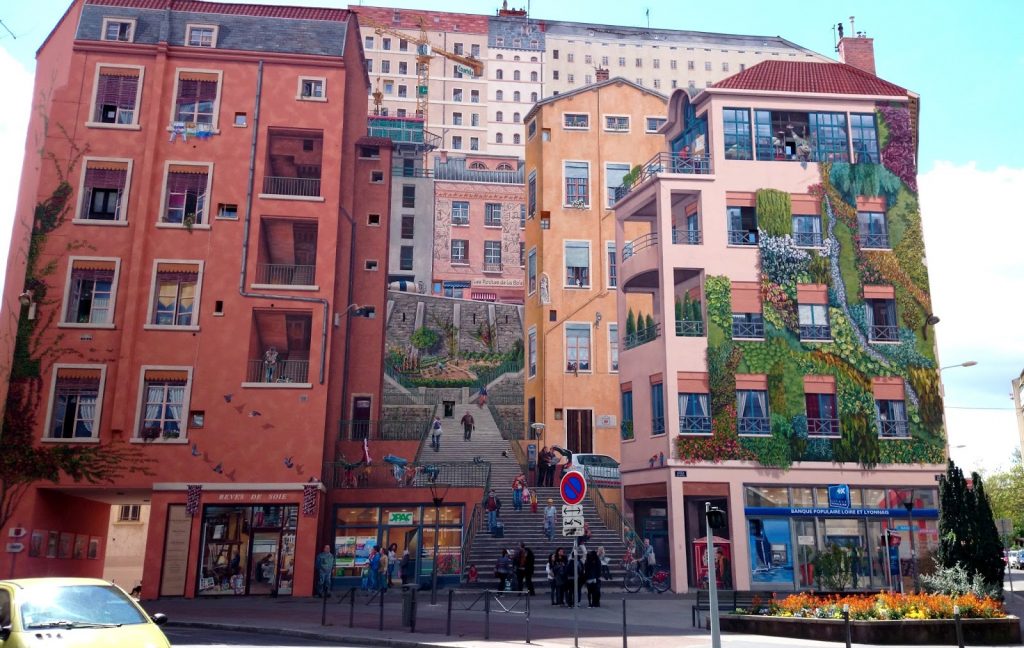
Firstly, his pedagogical knowledge, pointing out the poverty and practice of the Parisian universities, where people had to be taught in all known fields so that they would learn to behave and leave their primitive side behind.
He also expresses his vision of a world in which people need to be active and not waste time. An example of this is Pantagruel’s study schedule in the first book, where he is full of knowledge at all hours, without a break. He stresses the importance of a healthy body, where physical activity must go hand in hand with knowledge. Ideas that he began to develop when he began to work at the Hôpital Dieu in Lyon in 1532-1535.
And finally, his religious convictions about the Church, which are clearly expressed in the books Gargantua and Pantagruel. In them, Rabelais depicts the power imposed by the Catholics and their struggle against freedom of thought. Angels and Demons is a book that also deals with these ideals.
It should be noted that Rabelais’s third book was dedicated to the queen consort of Henry IV, Marguerite of Navarre.
Language
In Gargantua and Pantagruel. Rabelais expressed all his ideas and beliefs in a satirical and grotesque language. Despite his profound knowledge of several languages, it is a colloquial narrative. But it has a motive and a purpose. According to Rabelais, his purpose was to bring his books to Parisian society and make them understand that there was a world beyond the doctrine they had adopted.
To do this, Rabelais used a common language, humour and culture that could be understood by all. He believed that people understood through amusement, not punishment.
With this, Rabelais began to develop his greatest success. Gargantua and Pantagruel.
Analysis of Gargantua and Pantagruel
In Gargantua and Pantagruel, Rabelais’s satirical and vulgar language can be seen first and foremost, but on closer inspection one can discover the aspects that Rabelais wanted to expose in his works. Religion, politics and education, subjects that were censored in his time.
First of all, we have the size of Gargantua and Pantagruel, both giants and hungry, a meaning given to them by the carnivals celebrated at the time and by the appetite for knowledge associated with the beginning of the Renaissance.
Similarly, in the book of Gargantua, Rabelais’s ideals about the human condition and the hypocrisy of Parisian society can be seen in the Abbey of Théleme. Where Gargantua inscribed at the entrance to the castle that your will is the law. This is an aspect that Rabelais imbued with his humanist ideas, believing that life should not be allowed to pass, but should be lived without any ties.
For this reason, Rabelais was severely criticised in his time and censured by the Church. For his insulting language and his burlesque performances, which ridiculed the Father for believing that he was a god among men. In his books, Gargantua and Pantagruel are given the opportunity to choose their own path and their own logic, whatever their beliefs may have been at the time. A free thought and the growth of an individual in an autonomous way.
In the same way, Rabelais emphasises the idea of study and knowledge in his work, which is reflected in Pantagruel’s desire to study at all times and in Gargantua’s lack of desire to study at the beginning, which is remedied in the course of the novel. Considerations that were not taken into account in 16th century France, where people’s actions were based on a common thought dictated by the Church. This is called the evolution of primitive man, capable of rationing and thinking logically for himself.
On the other hand, Rabelais’s medical side can be seen in the descriptions of the human body in Gargantua and Pantagruel, which were the beginnings or development of the scientific aspect of how the human body develops. See, when the birth of Gargantua is narrated, a detailed description of the passage from the belly to the ear of Granguze, Gargantua’s mother.
Rabelais wanted to make people laugh with his book, pointing out that man is a creature who learns through amusement. However, it is sometimes misunderstood for its biting and scandalous language, which is defended by Guy Demerson, a critic who specialises in the Frenchman’s novels.
Some criticise the macho aspects of the characters, such as Panurge, who seeks out women to satisfy his needs, and if they do not comply, he punishes them severely. On a deeper level, however, Rabelais mocks men’s attitudes towards women.
And finally, the topics covered during Pantagruel’s offer to be president of the court, which he refused. Rabelais in this, harshly criticises the institutions of the time, which indoctrinated people to act in a specific way without knowing the reason for it, all through rules imposed by the political figures of yesteryear.
Rabelais believed in a thinking of autonomy and personal growth, aspects that are very much in line with the leading pioneers of reading, such as Plato, Homer and Aristotle, philosophers who gave birth to science and knowledge in ancient Greece.
Criticism generated by the book Gargantua and Pantagruel
Gargantua and Pantagruel is definitely a book that gives a lot to talk about, its burlesque content and high criticism of Parisian institutions generated harsh criticism in the 16th century. The Soborna, a Parisian university founded in 1257 that was noted for its humanist courses, reproached the image that Rabelais portrayed in the book Pantagruel with regard to education, branding the Frenchman’s books as heretical, and placing him on the famous list of banned books of the time.
In the case of the Church, Rabelais harshly criticised all the popes for the idealism they professed and condemned when there was disagreement. He was tried on 1 March 1552 with the help of King Henri II, who, after settling disputes with the Church, condemned Rabelais’s fourth book for its satire of the Catholic institution.
He reached such a level that, in order to avoid being burned at the stake with his friend Etienne, editor and publisher of Gargantua and Pantagruel, he was protected by Gepffroy d’Estissacc in the abbey of Maillezais. There he kept a low profile for two years because of the accusations against him. However, Rabelais obtained the king’s permission to publish the fourth book. A clear example of this is the book Papa Goriot.
In modern times, however, the criticism was made by Abel Lefranc, based on the views of John Calvin and Robert Estienne in the 16th century. Abel suggested that Rabelais was an atheist, i.e. a believer in science and not in God, which was refuted by Lucien Febvre in 1942, who argued that Abel saw and criticised the book Gargantua and Pantagruel within the parameters of contemporary society and not those of the time in Paris.
It should be noted that the authenticity of Rabaleis’s fifth book is currently being debated. It was published nine years after Rabaleis’ death, and its content bears the hallmarks of other novels.

